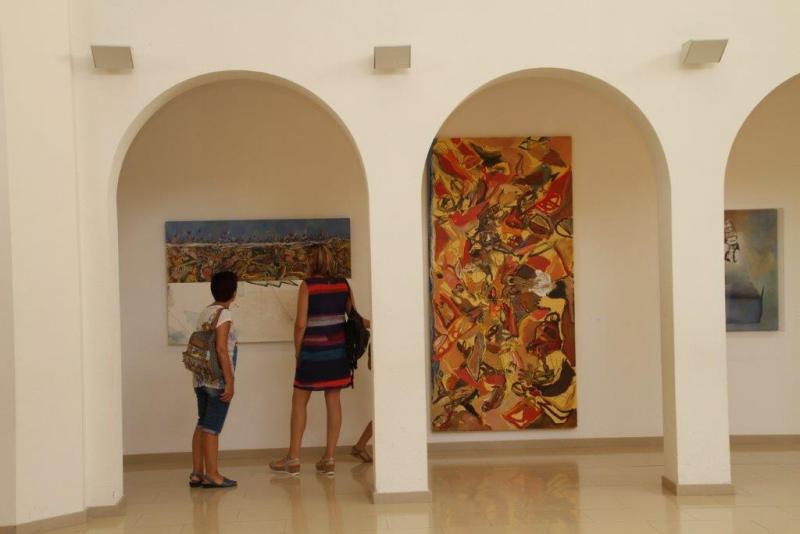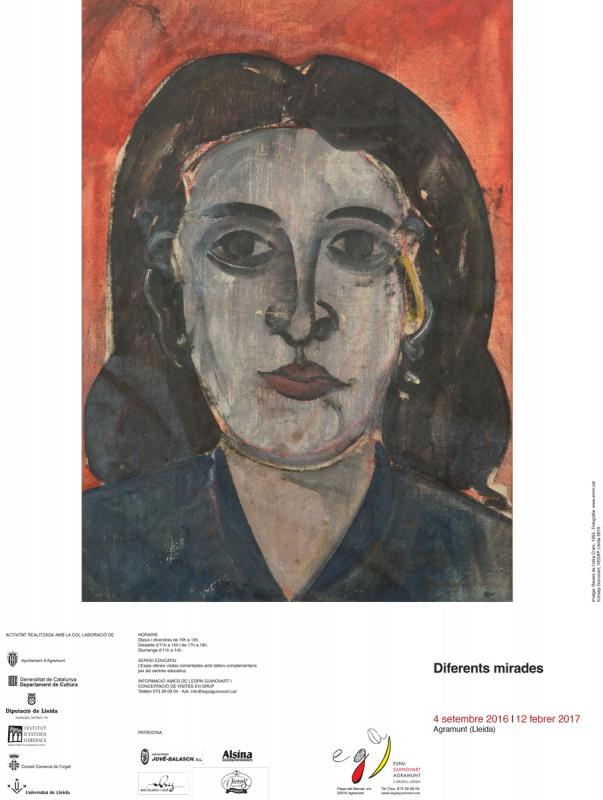Diferents Mirades
Josep Guinovart.
«A look can impress you more than the beauty of one eye.»
Mercè Rodoreda
How do we look at the world? What information do we capture with the sense of sight? In what way the pieces brazen the viewer? If they could talk ...
Josep Guinovart begins to look at reality through his brushes in the forties. He combined night classes at the School of Arts and Crafts with family work: wall painter. Both disciplines were fed back, and with these stimuli the young artist was cultivating the first stages of his long artistic career.
The principles were figurative; Most of the works of the exhibition are from this period. Young ways, who are looking to define themselves and still caress the role, in search of goals. As stated by Corredor-Matheos, "he has an enormous desire to learn and affirm, socially and artistically, and has extraordinary plastic gifts and great intuition."
Among these eyes that look at us from the works, we evolve chronologically while the artist narrates the reality he experiences. In the beginning, we observe the influence of the Romanesque style: clear lines, flat swords and big eyes that watch and watch the faithful. This admiration for the 12th century art will be portrayed for posterity thanks to the photography made under the apse of Sant Climent de Taüll, then already located in Barcelona. Guinovart, accompanied by Modest Cuixart, Marc Aleu, Antoni Tàpies, Joan Josep Tharrats, Jordi Mercadé and Jaume Muxart, smiles at the Catalan-Roca camera, which immortalizes this connection. These same Romanesque eyes look under the shadow of Picasso, a teacher always present in Guinovart. This is how shy cubism can be seen in some work. A portrait of a bullfighter shows us that the artist also shaped this practice; as Monet said, is one of the most beautiful, most curious and most terrible shows that one can see, but with a universe that overwhelms creators.
His stay in Paris makes him talk with new ways, while he is losing figuration. Picasso is still a present influence, but this time with the tense figures of the Guernica, which we see in a series of pieces created at different times, showing us clutches, holes and blacks.
Looks that the artist has killed. This lack of vision is opposed to all eyes - even with Romance lines - that arise from a crowd. A crowd that watches, thinks and moves.
The exhibition progresses without losing the feeling of being observed by pieces full of stories and anecdotes,
Experiences that Guinovart wanted to perpetuate with its pigments. The sculptures project a look, the eyes of Dalí are repeated onitically on the blue of his Portlligat and, finally, there are eyes that come from nature, like seeds, eggs or owls, who do not want to lose any detail of this as Interesting is life.




